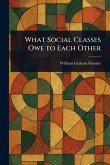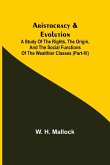"A Study of the Diet of the Labouring Classes in Edinburgh," meticulously carried out under the auspices of the Town Council, offers a fascinating glimpse into the nutritional habits and living conditions of Edinburgh's working class. This detailed investigation, originally published in the early 20th century, provides invaluable insights into the social and economic challenges faced by this population during that era. Authored by Diarmid Noël Paton, J Craufurd Dunlop, and E Inglis, the study sheds light on the dietary intake, nutritional deficiencies, and overall health of the laboring classes. The findings offer a crucial perspective on urban poverty and public health concerns of the time. This historical document serves as a valuable resource for researchers, historians, and anyone interested in understanding the social fabric of Edinburgh and the broader context of working-class life. This work has been selected by scholars as being culturally important, and is part of the knowledge base of civilization as we know it. This work was reproduced from the original artifact, and remains as true to the original work as possible. Therefore, you will see the original copyright references, library stamps (as most of these works have been housed in our most important libraries around the world), and other notations in the work. This work is in the public domain in the United States of America, and possibly other nations. Within the United States, you may freely copy and distribute this work, as no entity (individual or corporate) has a copyright on the body of the work. As a reproduction of a historical artifact, this work may contain missing or blurred pages, poor pictures, errant marks, etc. Scholars believe, and we concur, that this work is important enough to be preserved, reproduced, and made generally available to the public. We appreciate your support of the preservation process, and thank you for being an important part of keeping this knowledge alive and relevant.
Bitte wählen Sie Ihr Anliegen aus.
Rechnungen
Retourenschein anfordern
Bestellstatus
Storno








